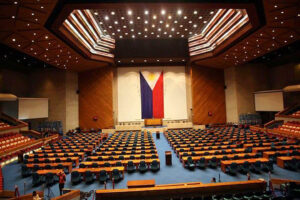
Crooks incorporated: Safeguards in the budget process

(Part 2 of 3)
At the Budget Execution phase when funds, programs, projects, and activities move, several built-in safeguards are designed to ensure that spending strictly follows the law, remains within approved limits, and delivers on intended outcomes.
All agencies are presumed to have a system of internal controls. Where the internal control system of the audited agencies is inadequate, the Commission on Audit (CoA) is authorized by the Constitution to adopt measures, including temporary or special pre-audit, to correct the deficiencies.
The Government Auditing Code defines internal control as the plan of organization and all the coordinate methods and measures adopted within an organization or agency to safeguard its assets, check the accuracy and reliability of its accounting data, and encourage adherence to prescribed managerial policies.
To help agencies strengthen their internal controls, the Department of Budget and Management (DBM) issued Circular Letter No. 2008-8 (Oct. 23, 2008), introducing the National Guidelines on Internal Control Systems (NGICS). These guidelines provide department and agency heads with a framework for designing, installing, implementing, and monitoring their respective Internal Control System. Under the guidelines, internal control in the public sector must conform to five general objectives: Safeguard assets; Check accuracy and reliability of accounting data; Ensure economical, efficient and effective operations; Comply with laws and regulations; and Adhere to managerial policies.
Internal controls create a structured environment of accountability where transactions are documented, approvals are tracked, and fraud is easier to detect and prevent.
In addition to internal controls within individual agencies, the DBM plays a central oversight role during budget execution through its authority over the release of funds. This oversight function ensures that government spending strictly follows the General Appropriations Act and other relevant fiscal policies. It also allows the DBM to maintain fiscal discipline, safeguard public resources, and support cash and debt management objectives throughout the year.
Fund releases are governed by the DBM’s policies, procedures, rules, and regulations, which specify how and when agencies can access appropriations. These rules are structured around two key types of budgetary authority: obligation authority and disbursement authority.
Obligation authority gives an agency permission to incur obligations or enter into contracts for goods, services, and projects. An example is a Special Allotment Release Order (SARO), which signals that a portion of an agency’s appropriation is now available for commitment. Disbursement authority, by contrast, governs the actual payment of obligations that have already been approved.
A common disbursement instrument is the Notice of Cash Allocation (NCA), which allows an agency to draw cash from the National Treasury to settle its obligations.
The distinction between these two authorities creates a layered system of safeguards. Funds are not handed over in bulk; they move through a controlled sequence of approvals. At each stage, the DBM checks for compliance with the General Appropriations Act (GAA), related fiscal rules, and required documentation. By issuing separate documents for obligations and disbursements, the DBM creates a detailed paper trail that auditors and oversight agencies may track.
LAWS, RULES AS SAFEGUARDSThe third and arguably the most consequential set of safeguards in budget execution are procurement laws, rules, and regulations.
Most of the public-works projects now under scrutiny for corruption, including many of the controversial flood-control contracts, were awarded under Republic Act No. 9184 (RA 9184), the Government Procurement Reform Act, and its Implementing Rules and Regulations (IRR). Enacted in 2003, RA 9184 was meant to establish transparency, competition, and accountability in how government agencies procure goods, services, and infrastructure.
A core safeguard under RA 9184 was the Annual Procurement Plan (APP), which required agencies to plan their procurements in advance and link them directly to authorized programs and appropriations. Each APP must detail the projects to be procured, their estimated costs, sources of funding, timelines, and the chosen mode of procurement. This aims to ensure that no procurement could proceed unless it was tied to an approved budget and reflected in the agency’s overall plan.
The general rule under RA 9184 was competitive public bidding, designed to prevent collusion while ensuring value for money. Bidders must submit two sealed envelopes: one with eligibility and technical documents, and the other with their financial proposal.
The Bids and Awards Committee (BAC) opens the first envelope to verify compliance with requirements and determines which bidders are eligible to proceed. Only those who passed this stage will have their financial proposals opened. The bid with the Lowest Calculated Bid (LCB) is identified and then subjected to a rigorous post-qualification process to verify all submissions. If it passed, it became the Lowest Calculated Responsive Bid (LCRB) and is recommended for award to the Head of the Procuring Entity (HoPE). Upon approval, a Notice of Award is issued, followed by the signing of the contract and a Notice to Proceed, marking the start of contract implementation.
For infrastructure projects, RA 9184 imposed additional safeguards because of their complexity and high costs. Contractors are required to have a valid license from the Philippine Contractors Accreditation Board (PCAB). Moreover, no project could move to procurement without detailed engineering designs and complete project specifications.
While competitive bidding is the mandatory default method, RA 9184 allowed for alternative procurement modes, such as negotiated procurement, repeat orders, or shopping, but only under narrow, clearly defined conditions. These alternatives were intended to provide flexibility without undermining safeguards.
In July 2024, Congress enacted Republic Act No. 12009, the New Government Procurement Act. While most procedural steps align with RA 9184, RA 12009 introduces new policies and tools to strengthen safeguards and improve project outcomes.
One of the most significant changes is the adoption of a “fit-for-purpose” approach to procurement. Under RA 9184, competitive bidding was the mandatory default. RA 12009 now allows agencies to choose among a wider range of procurement methods. RA 12009 also improves how bids are evaluated. Whereas the old regime relied primarily on awarding contracts to the Lowest Calculated Responsive Bid, which emphasized price above all else, the new law introduces the Most Economically Advantageous Responsive Bid (MEARB) standard. MEARB allows agencies to consider both cost and quality.
Other positive developments under RA 12009 include a requirement for disclosure of beneficial ownership information, which aims to curb the use of dummy corporations and make conflict of interest easier to detect. The law also places greater emphasis on professionalization within the procurement system, establishing clear qualification standards, competency frameworks, and a code of ethics for procurement professionals.
The Budget Accountability phase closes the loop of the budget cycle. After funds have been appropriated, released, and spent, agencies must account for how they used these funds and whether their programs and projects delivered on their promises.
While the agency internal control systems and the DBM safeguards extend all the way to the budget accountability phase, there are several external oversight systems that provide additional layers of scrutiny once funds have been obligated and spent.
OVERSIGHT AGENCIESAt the center of this external oversight is the Commission on Audit. CoA examines, audits, and settles all accounts of government revenues and expenditures. Its mandate covers both financial transactions and the actual outputs produced. A typical annual audit of agencies covers verifying the level of assurance that may be placed on the agency’s assertions on its financial statements; determining the propriety of transactions, as well as the extent of compliance with pertinent laws, rules and regulations; and recommending agency improvement opportunities. When CoA uncovers deficiencies or irregularities, it issues findings such as audit observations, notices of suspension, and notices of disallowance.
Another critical institution in accountability is the Office of the Ombudsman. The Ombudsman serves as the people’s champion against corruption and misconduct in government. It can investigate any public official or employee, prosecute criminal and administrative cases, and study systemic inefficiency, red tape, and corruption in government operations and recommend reforms. Importantly, it has primary investigatory jurisdiction over cases cognizable by the Sandiganbayan.
Congress also plays a role in accountability through oversight hearings and inquiries in aid of legislation. While its power is primarily legislative, Congress can summon officials, review the implementation of programs, and demand reports to ensure that appropriations are used properly. These hearings serve as a public forum to surface irregularities and influence future budget priorities.
Finally, media and public scrutiny are indispensable safeguards. Civil society organizations, investigative journalists, and engaged citizens help hold the government accountable by monitoring implementation and exposing issues of waste or corruption. Transparency initiatives such as full disclosure portals and open data systems enable the public to track government spending and demand corrective action.
To be continued.
(Read part 1 here: https://tinyurl.com/2b8qzbdx)
Nepomuceno Malaluan, Malou Mangahas, And Jenina Joy Chavez are co-convenors of the Right to Know, Right Now! (R2KRN) Coalition.



